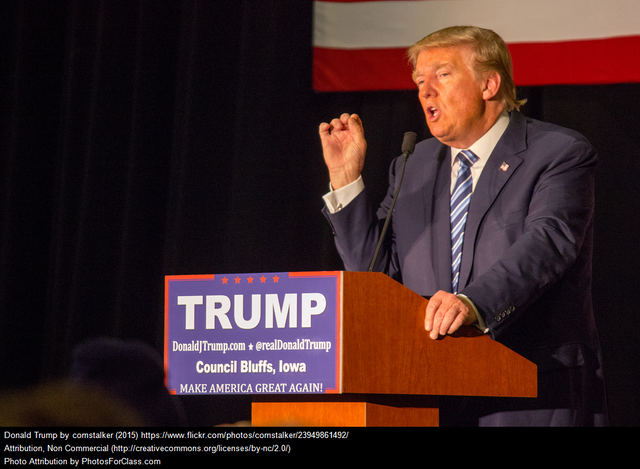Fact Checking Trumps Speech
Donald Trump's speech in Cleveland depicted a dramatic picture of the United States, suffering from the crisis and lawlessness. Not since Richard Nixon in the 1960s, has a presidential candidate put such emphasis on law and order. But much of Trump's statistics were inaccurate or misleading.

Photo: It was a pessimistic view of the US that was painted up in Trump's concluding speech at the party's convention. Trump talked how the United States was in a deep crisis with high crime and acute threats that hide behind every corner. In one of the century's most dramatic moments Trump promised to "The crime and violence that today afflicts our nation will soon come to an end". It sounded frequently as a continuation of the alarmist rhetoric that President Richard Nixon became famous in the late 1960s, when the US had problems with high crime and riots in many cities.
Nixon won the election by promising law and order, tougher measures against crime and tougher sentencing. Now Trump has a similar narrative about the United States, a growing threat from terrorists, criminals and illegal immigration. Trump has even revived the old Nixon's election slogan of a "silent majority" who just want peace and quiet.
But many of the figures and statistics as Trump cited in the speech, however, was exaggerated or misleading. There has been a slight increase in murders in large cities over the past year, but that is an increase from historically low levels. In New York, for example, over 2,000 murders occurred per year in the early 1990s, while last year saw just over 300 murders.
Trump also spoke very dramatically about a record increase in the number of murders of police officers in the United States, which made a strong impact in the arena, in the wake of the recent weeks, attacks against police officers in Baton Rouge and Dallas. But it was much worse before. During Reagan's presidency in the 1980s, an average of 101 officers were killed per year. During Bill Clinton in the 1990s, the average was 81. Under Obama, the average was 62. Even compared with statistics from last year up until the same date, the figure is lower than it was in 2015.
Trump also claimed that 58 percent of black youth in the US are unemployed. According to the Bureau of Labor Statistics, the figure is 31 percent.
Trump's exaggerations and lies are no coincidences. There has been a systemic problem during his more than a year-long presidential campaign. In a previous study of PolitiFact, which examines the facts politicians' claims in the United States, only 24 percent of Trump's statements during the presidential campaign were correct, while 76 percent were lies.